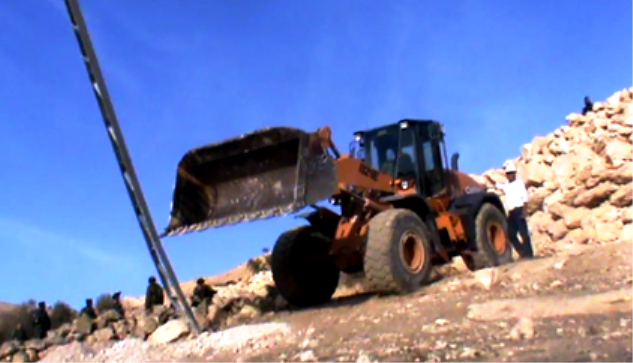Tag: Um al Fagara
-
Four houses and one mosque fall to Israeli demolitions in Susiya
by Fida Far 25 November 2011 | International Solidarity Movement, West Bank Four houses and one mosque were destroyed this morning, November 24th, in the villages in the south of the West Bank. Around 10 am, fifty soldiers and seven police cars arrived to village Susiya. Two bulldozers destroyed the house of Musa Magna’s family…
-
Israeli forces and settlers try to drive away Um Alfagara residents
by Aida Gerard 5 November 2011 | International Solidarity Movement, West Bank On Thursday November 3rd at dawn, 8 military jeeps with around 25 soldiers and one bulldozer arrived at Um Alfagara. The bulldozer immediately began to demolish six pylons built for bringing electrical wires from the nearby village of Attwani to Um Alfagara. The…


